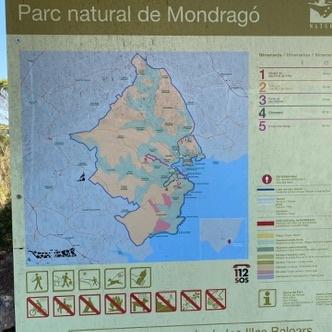How does s'Albufera Natural Park combine natural beauty with historical sites related to agriculture?
Similar Topics
s'albufera natural park
mallorca wetlands
agricultural heritage
freshwater marshes
bird watching
ancient irrigation canals
rice cultivation history
sustainable farming practices
s'Albufera Natural Park in Mallorca is a remarkable destination where the stunning natural environment intertwines seamlessly with historical sites that reflect the region’s rich agricultural heritage. The park covers a vast wetland area, one of the most important in the Balearic Islands, offering visitors the chance to experience a diverse ecosystem of freshwater marshes, reed beds, and tranquil lagoon waters. This lush habitat supports a variety of wildlife, including numerous bird species, amphibians, and fish, making it a haven for nature lovers and bird watchers alike.
Beyond its ecological richness, s'Albufera also preserves remnants of the traditional agricultural practices that have shaped the landscape for centuries. Within the park, visitors can encounter ancient irrigation canals, stone-built terraces, and old farmhouses that reveal the historical significance of rice cultivation and subsistence farming. These agricultural elements are not only well-preserved but also contextualized through interpretative signage and guided tours, allowing visitors to understand how the natural features were harnessed to support local communities. The combination of pristine scenery and cultural heritage creates a unique experience, where the beauty of nature is enhanced by the story of human interaction with the land.
The contrast between the park’s serene natural settings and the historical vestiges of agricultural life provides a vivid illustration of sustainability and balance. It highlights how traditional farming methods coexisted harmoniously with the natural environment before modern industrialization altered landscapes elsewhere. This blend of nature and history at s'Albufera Natural Park offers visitors a thoughtful reflection on the importance of preserving both ecological integrity and cultural identity. Whether wandering along its bird-filled shores or exploring its old rural infrastructure, visitors leave with a deeper appreciation for the landscape’s multifaceted significance.
Beyond its ecological richness, s'Albufera also preserves remnants of the traditional agricultural practices that have shaped the landscape for centuries. Within the park, visitors can encounter ancient irrigation canals, stone-built terraces, and old farmhouses that reveal the historical significance of rice cultivation and subsistence farming. These agricultural elements are not only well-preserved but also contextualized through interpretative signage and guided tours, allowing visitors to understand how the natural features were harnessed to support local communities. The combination of pristine scenery and cultural heritage creates a unique experience, where the beauty of nature is enhanced by the story of human interaction with the land.
The contrast between the park’s serene natural settings and the historical vestiges of agricultural life provides a vivid illustration of sustainability and balance. It highlights how traditional farming methods coexisted harmoniously with the natural environment before modern industrialization altered landscapes elsewhere. This blend of nature and history at s'Albufera Natural Park offers visitors a thoughtful reflection on the importance of preserving both ecological integrity and cultural identity. Whether wandering along its bird-filled shores or exploring its old rural infrastructure, visitors leave with a deeper appreciation for the landscape’s multifaceted significance.
🧩 Related Questions
Related Question
Do Viajes Noris S.A. tours in Mallorca provide commentary in less common languages like Italian or French?
Related Question
What traditional water conservation techniques are still used by farmers in Mallorca today?
Related Question
How do the obelisks affect visitor interest in exploring the surrounding areas of Ca'n Picafort?
